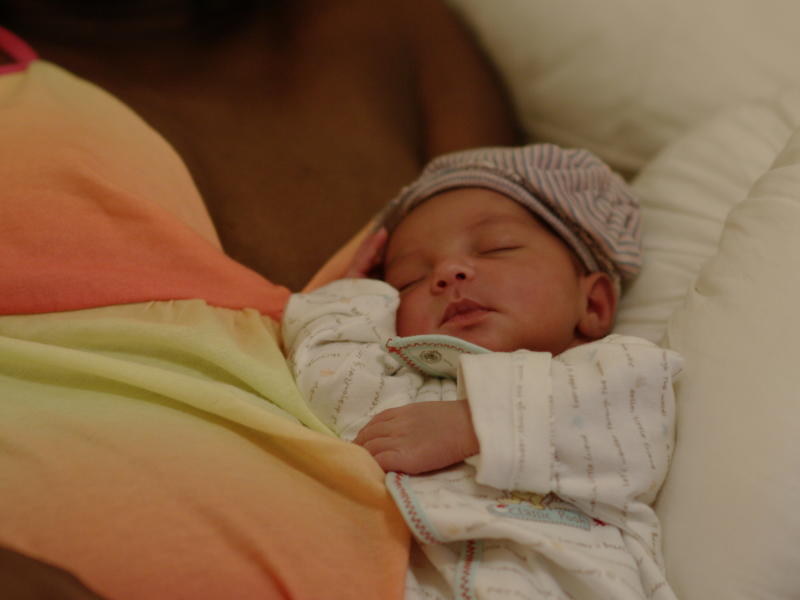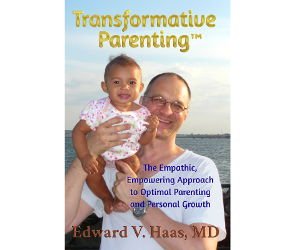An Independent Evaluation of The Risks and Benefits of Co-Sleeping.
All relationships are deepened by proximity and time spent together, and the parent-child relationship is no exception. There is no substitute for time and attentiveness spent in service to your child, and there is no more critical time than infancy and the toddler years to focus on the parent-child bond.
These earliest years, when the infant’s mannerisms and behaviors are developing, provide the motivated parent a unique opportunity to understand and respond to their child’s wants and needs both in the present and in the future.
In my book: Transformative Parenting: The Empathic, Empowering Approach to Optimal Parenting and Personal Growth; I show that being with a parent or caregiver who is responsive to their needs helps to alleviate a child’s fears of helplessness and isolation, and leads to feelings of security, and eventually self-confidence, compassion and contentment.
It doesn’t require a scientific study to observe how a crying baby calms when held by a loving caregiver. Loving touch and holding are intrinsic human needs, and are naturally soothing, except perhaps, for those who have been traumatized by abuse or neglect.
Co-sleeping is generally accepted practice in much of the world. Which makes sense, given it allows continuous communication and enhanced caregiving when compared to separating a child from its parents.
Issues that sometimes arise with infants while they sleep, such as coughing, difficulty breathing, discomfort due to hunger, or being in one position for an extended period, fears upon awakening from a nightmare, or even from just finding themselves alone, can all be alleviated or reduced by having a parent gently touching them or in close proximity and ready to help.
In the United States, however, co-sleeping has been widely discouraged as being dangerous, (see online articles here, here, and here as examples) due to past recommendations by the American Academy of Pediatrics, an influential peer group for pediatricians.
While I have the highest respect for pediatricians, it can be difficult for anyone to express independent viewpoints when their authority figures are proclaiming contrary opinions.
To paraphrase René Descartes, in order to firmly “know” anything, one must first question everything. This is the spirit of discovery we bring to Transformative Parenting®. In that spirit, I have undertaken my own independent analysis of the publicly available data, which I believe shows that fears about the dangers of co-sleeping have been overblown; especially when counterbalanced by the benefits of co-sleeping on the emotional well-being of both the child and the parent.
The Centers for Disease Control and Prevention (CDC), on their Wonder website reports all infant deaths due to accidental suffocation under the ICD-10 code: W75. For our analysis, we would like to know which of these cases were due solely to suffocation due to a parent’s body, but unfortunately code W75 also includes accidental suffocation by bed linen or a pillow, which could also take place in a crib or other area away from the parent.
Nevertheless, we will press forward using the W75 data, realizing we will be overestimating the risks of co-sleeping when we do so.
Using the latest currently available data, during the year 2010 there were 3,988,076 reported live births, and 23,211 reported deaths of infants less than one year of age. From this, we can estimate that out of every 10,000 babies born in the United States, roughly 58 might be expected to die (from all causes) during their first year of life.
Because most infants in the U.S. are born at a hospital, where it is not likely they will be co-sleeping, and since the first day of life is also a period of very high risk for a baby, we will exclude those infants who died in their first 24 hours of life from our consideration. When we do so, we find 13,398 infants died between days 2 and 364 of their lives, and 3,978,263 children survived past day one. This gives us an estimated first year mortality rate from all causes of 34 per 10,000, for children who survive longer than 1 day.
According to the CDC, of these remaining children, 857 died in their first year of life due to accidental suffocation, some of which was due to co-sleeping, but some also due to bedding materials. Again, we are going to assume that ALL of these deaths were due to co-sleeping in order to help make our point.
We now have to come up with an estimate of how many of the 3,978,263 children co-slept with their parents. Unfortunately, estimates of the prevalence of co-sleeping vary widely, from a low of 11.2%, for families who co-sleep habitually up to around 68% of families who do so occasionally. Again, in order to prove our point, we are going to lean towards overstating the risk by using the lowest published estimate for families who co-sleep, which is 11.2%. We take the 3,978,263 infants under one year of age x 11.2% of families who co-sleep, which gives an estimate of 445,565 children under one year of age who slept with their parents habitually in 2010.
We can now make an estimate of the risk of death due to co-sleeping: (857 deaths) / (445,565 children who co-slept) = 0.00192, or 19 deaths for every 10,000 children under one year of age who regularly co-slept with their parents over the time span of one year.
If we assume each of these regularly co-sleeping children slept once per day with their parent, we have: (445,565 children x 1 co-sleeps/day x 365 days/year) / (857 child-deaths) = 189,800 co-sleeps / each death. Note that we are ignoring all the co-sleeping events of parents who only occasionally slept with their child. If those were included, we would find the risk to be even less.
Our estimate is then 1 death for every 189,800 times a parent sleeps with their child. And, for the reasons I’ve talked about above, this likely overstates the risk!
Let’s compare this to other risks in daily life. After all, life is full of risks. We accept certain risks because we consider the reward associated with that risk to be a good bargain. For example, according to the data presented in this chart, the risk of dying in a bicycle accident is 1 in 140,845 bike rides. For most of us, the benefits of going for a bicycle ride on our physical and emotional health are judged great enough to be worth this risk.
Similarly, there are many physical and emotional benefits to sleeping with your child, both for you and your baby. Better peace of mind for both of you, better feeding for baby, stronger feelings of security and being cared about for your baby, a deeper level of bonding for both of you, are examples that come to mind, and websites here, and here describe many others.
According to the analysis we have just done, the risk of your baby dying while sleeping with you is less than the risk of dying while going for a bicycle ride. Yet, we do not hear calls for people to stop riding bicycles, or for parents to stop teaching their children to ride bicycles!
The recommendation that parents not sleep with their children ignores these emotional and physical benefits, out of a single-minded desire to eliminate every possible threat to a baby’s survival. On the face of it, this could be considered a reasonable approach, but not when matched against what is lost for the parent and the baby.
In the logical development of Transformative Parenting®, particularly in the book, I explain why a primary focus on the emotional well-being of the child is so important, and how having this focus unexpectedly turns out to have multiple positive impacts for the parent.
In some cases, the need for survival supersedes the desire for emotional well-being, say when a toddler wants to cross a busy street unexpectedly and you must grab them quickly. Co-sleeping has been presented to us as just this sort of case.
However co-sleeping, far from being a “dangerous activity”, is actually relatively safe. But, just as riding a bicycle is more dangerous for a beginner, so co-sleeping should also be approached carefully to minimize the risks.
With new parents who may not be aware of how much or little they move while they are asleep, and particularly with newborns, caution should be exercised. I recommend making a protected area for your baby to lie in, perhaps out of a sturdy cardboard box which has been cut down so you can reach in to maintain touch contact. That way if you roll over, or kick out in your sleep unexpectedly, the baby will be safe.
As your child gets larger, and you become more experienced in how you sleep, the box may become less necessary.
Another note of caution: Don’t sleep with your child if you are drunk or under the influence of other drugs, or if you have some other condition that may cause you not to be aware of rolling over even a protective box. Also, if you or your spouse are prone to violent movements, arguments in bed, or have impulse control problems which could make it unsafe for a child to sleep with you, it is better for them to have their own sleeping space to assure safety.
However, for most parents, sleeping with your baby can offer a profound affirmation of your role as primary provider, nurturer, and protector, imbue your child with a deep sense of security, and foster parent-child communication on a deep, even unconscious level. (See my book for a more complete discussion of unconscious-level parent-child communication.) With appropriate precautions, co-sleeping can be a reasonably safe activity. I hope you and your baby are able to enjoy its many benefits!
Thank you for taking the time to read this article. I hope you will share it with expectant parents, and those with young children. Share your thoughts in the comments below. Have I convinced you? Why or why not? Are there other concerns you would like to see addressed in future posts?








Recent Comments